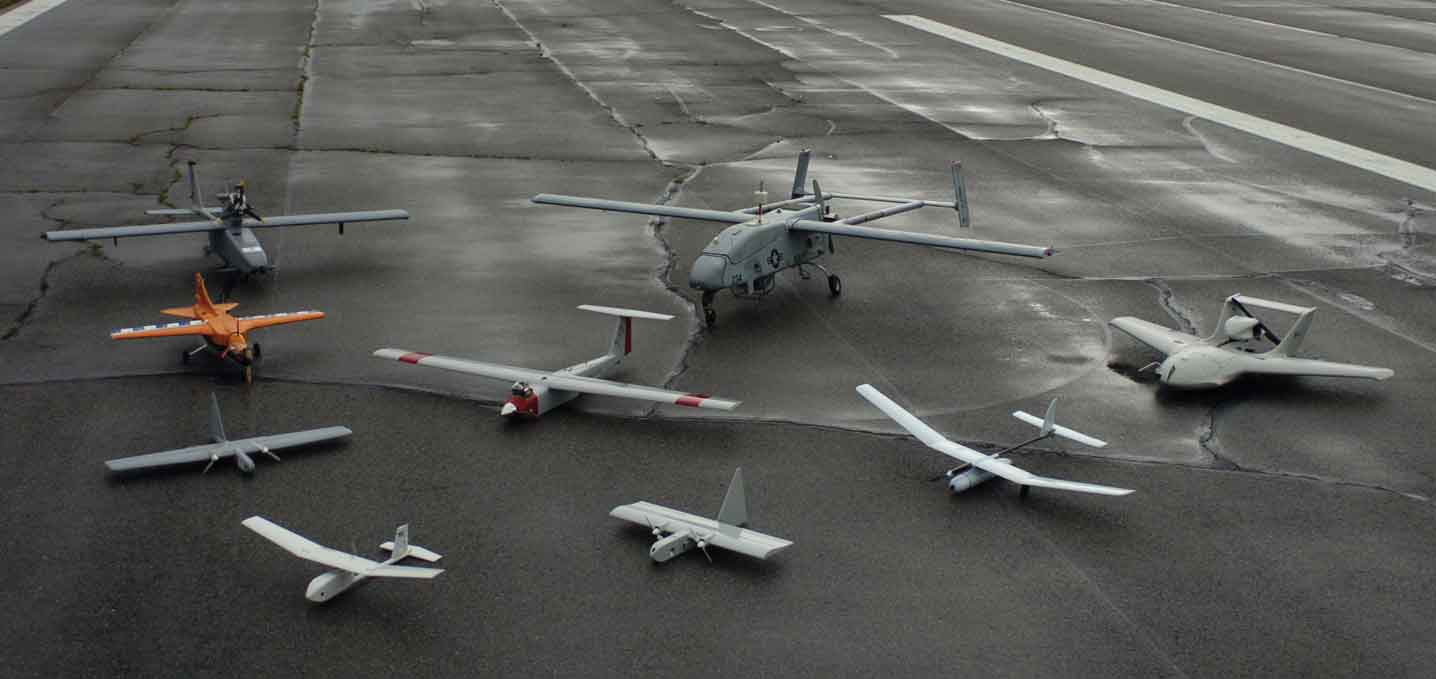
Various Unmanned Aerial Vehicles. Pictured are (front to back, left to right) RQ-11A Raven, Evolution, Dragon Eye, NASA FLIC, Arcturus T-15, Skylark, Tern, RQ-2B Pioneer, and Neptune.
Undoubtedly the fastest growing segment of military aviation research and development today, Unmanned Aerial Systems offer a host of operational, technical, economic and environmental advantages. Unmanned Aerial Vehicles (UAVs) have existed for a long time. They have been variously referred to as drones, robot planes, pilotless aircraft, Remotely Piloted Vehicles (RPVs) and Remotely Piloted Aircraft (RPAs) to describe aircraft that fly under control with no human beings aboard. UAVs use aerodynamic forces to provide lift; they can fly autonomously or be piloted remotely, can be expendable or recoverable with the capability to carry lethal or non-lethal payload.
Emergence of Unmanned Aerial Systems
The last decade of global conflict has witnessed the dawn of the age of the robot plane. Unmanned Aerial Systems (UAS) have been around for decades but today, they are ubiquitous war machines with unmatched endurance and lethal combat capabilities. Undoubtedly the fastest growing segment of military aviation research and development today, Unmanned Aerial Systems offer a host of operational, technical, economic and environmental advantages. Unmanned Aerial Vehicles (UAVs) have existed for a long time. They have been variously referred to as drones, robot planes, pilotless aircraft, Remotely Piloted Vehicles (RPVs) and Remotely Piloted Aircraft (RPAs) to describe aircraft that fly under control with no human beings aboard. UAVs use aerodynamic forces to provide lift; they can fly autonomously or be piloted remotely, can be expendable or recoverable with the capability to carry lethal or non-lethal payload. In recent times, the term ‘Unmanned Aerial Vehicle’ has gained acceptance and when combined with ground control stations and data links, they constitute UAS.
Generally, UAS are cheaper to procure and operate as compared to manned aircraft.
In many recent wars and even peacetime missions, the UAS have performed roles traditionally carried out by manned aircraft. UAS offer two main advantages over manned aircraft. They eliminate the risk to a pilot’s life and their aeronautical capabilities such as endurance are not constrained by human limitations. Generally, UAS are cheaper to procure and operate as compared to manned aircraft.
Currently, UAS are employed by militaries around the world for intelligence, surveillance, reconnaissance, electronic warfare and strike missions. In future, they could be employed for resupply, combat search and rescue, aerial refuelling and air combat. The availability of advanced navigation and satellite communication technologies has made remote operations of UAS more practical. The changing nature of military operations where it becomes necessary to conduct search and destroy missions in populated areas has increased the demands on UAS. The capability of a UAV to loiter, search, identify and strike targets while minimising collateral damage, makes it an invaluable weapon system for military commanders. Better remote control and enhanced camera technology allow a UAS to take on more involved reconnaissance roles. The Israeli light UAS also focus on low-weight efficient designs with emphasis on in-flight endurance. Today’s UAVs can remain on mission for 30 to 40 hours, far beyond the capabilities of any human crew. Research into in-flight refuelling and ultra-efficient solar power, could help extend the range of UAVs close to infinity, limited primarily by maintenance needs.
Availability of advanced navigation and satellite communication technologies has made remote operations of UAS more practical.
On December 17, 2011, in a path-breaking achievement, a US Marine detachment completed the first delivery of 1,400 kg of food supplies to a forward post in the combat zone in Afghanistan employing the K-MAX, an unmanned helicopter. The unique 90-minute mission opened an entirely new vista for military employment of UAS. Israel was the first country to successfully employ the UAS in the Lebanon War of 1982. Today, it is the USA that is the leader in UAS technologies, Research & Development and operational employment in combat zones. Most militaries in the world now have UAS in their inventory.
Comparison with Manned Platforms
Like any weapons system, the UAS have advantages and disadvantages when compared to manned aircraft. Some of the advantages are:
Cost: The procurement and operating costs of UAVs are significantly lower when compared to manned platforms. Hence for a given budget, these can be procured in larger numbers when compared with manned aircraft. However, increasing sophistication in design and capability is inclined to push cost upwards.
Expendability: UAVs can be employed in heavily defended areas without risk to humans.
Manoeuvrability: UAVs are more manoeuvrable than manned planes without the limitations of a human pilot.
Stealth: As the cockpit, one of the least stealthy parts of an aircraft, is dispensed with, UAVs can be built stealthier than a manned plane.
Transportation: UAVs are smaller, lighter and easier to transport.
Disadvantages of UAVs include:
Programming Limitations: UAVs may not be able to compensate for the changing battlefield environment such as being able to attack a new more desirable target that appeared after the aircraft was launched or changing course to avoid enemy defences.
Limitations of Payload: As UAVs are typically smaller than a manned plane, they cannot carry as large a payload. However, as compared to manned aircraft, their payload to total weight ratio is higher.
Limited Range: UAVs may not be able to carry as much fuel as manned aircraft and therefore, may have a shorter range, a limitation which is now being overcome.
Less Versatile: UAVs are tailored to specific types of missions. These machines are not as versatile as a modern multi-role combat aircraft.
Loss of Contact: If contact is lost with the ground station, the vehicle may be lost.
Technological advancements have enabled UAV/UAS to overcome most of the current drawbacks.
Ongoing Programmes
The USA has the largest and most modern inventory of UAS with many of their UAVs having been tested under rigorous war conditions in Iraq and Afghanistan/Pakistan areas. Some of the major ongoing UAS programmes of the USA are as under:
The USA has the largest and most modern inventory of UAS…
MQ-1 Predator – Its primary function is reconnaissance and acquisition of potential ground targets. Armed with 2x Hellfire anti-tank missiles, it can remain airborne for 24 hours. It takes off and lands like a regular fighter but is controlled by a pilot on the ground using a joystick.
MQ-1C Grey Eagle – A variant of the Predator with loiter time of 36 hours capable of carrying 4x Hellfire missiles.
MQ-9 Reaper – An extended version of the Predator with a more powerful engine, the Reaper has an endurance of 32 hours and range of 3,700 km and can carry 16x Hellfire missiles or 250 kg armament/small diameter bombs.
RQ-4 Global Hawk – The Global Hawk is the largest UAS in operation anywhere. With a range of 10,000 km, it can loiter for 24 hours and return to base. The Hawk is utilised for ISR, ELINT and SIGINT.
BAMS – A naval variant of the Global Hawk, the Broad Area Maritime Surveillance system is equipped with sea-optimised equipment and sensors.
MQ-8B Fire Scout – A naval helicopter down-sized as a UAV for communication data link, surveillance and mine-detection.
Fire-X/MQ-8C – Adaptation of Fire Scout software and navigation systems to a full-sized helicopter.
RQ-170 Sentinel – A tail-less flying wing with stealth properties. Probably employed during the Osama Bin Laden operation at Abbottabad on May 01, 2011. Iran claims to have captured intact an RQ-170 that transgressed into Iranian airspace on December 02, 2011. If Iran has been able to ‘take over’ control of the RQ-170 and make it land, it speaks volumes of Iranian capability.
RQ-5A Hunter – Originally an Israeli UAS, it is employed for ISR. With an endurance capability of 12 hours, its radius of action is 260 km.
MQ-5B Hunter II – A variant of the RQ-5A with elongated wings and a better engine, it has a loiter capability of 15 hours.
RQ-7 Shadow – Employed for an army’s brigade level tactical ISR operations, this UAV typically flies at 8,000 feet and has a loiter capability of 4 to 5 hours. The Shadow is rail-launched and recovered by an arrester system.
RQ-14 Dragon Eye – Two-man-portable small battery operated UAS for company level reconnaissance, surveillance and target acquisition operations.
FQM-151 Pointer – Short-range UAS for ISR.
RQ-11 Raven – Man-portable variant of the Dragon Eye for over-the-hill ISR.
Scan Eagle – Launch and forget UAS. Flies to points of interest selected by ground operator.
Small Tactical UAS (STUAS) – Tactical UAS yet to be operationalised.
Future UAS Programmes in the US
Unmanned Carrier Launched Airborne Surveillance and Strike (UCLASS) – Carrier-launched stealthy UAS for long range surveillance. Expected to enter service by 2018.
X-47 – A tailless fighter aircraft-sized unique UCAV capable of aerial refuelling and carrier landings with no human assistance.
Phantom Ray/Avenger – Part of the UCLASS programme. Both will be capable of carrying approximately 1,400 kg of weapons load.
High Altitude Long Endurance Systems
Phantom Eye/ Orion/ Global Observer: These are UAS on the drawing board with capabilities for combat, extended loiter and others mimicking the manned fighter aircraft.
One might expect that future UAS development is directed towards fully autonomous planes and work is certainly being done in this area. UAS today have some forms of autonomy – flight control surfaces may be fully automated, with the controller simply issuing a series of GPS waypoints as the on-board computer handles the details. It is important to note that UAV autonomy research comes mainly from the control angle. That is, programmes are written with sensor input/decision trees for the plane to follow. Actual artificial intelligence is not a major aspect of UAV research. But overall, autonomy is not a priority right now. It is essentially a cost-benefit issue – the cost of developing effective autonomous UAVs is undercut by the cost of training human controllers, and planes that fly themselves are yet on the horizon. UAS today are characterised by robustness and ubiquity. Next-generation UAS will be larger, allowing them to carry more payload. They will also have more powerful engines. The Avenger variant of the Predator has jet engines allowing for lower response time. A US Air Force study predicts that UAS built on a modular and networked architecture with greater autonomy through the use of artificial intelligence technologies will eliminate the need for ground-based pilots and help overcome the vulnerability of the UAS to communication links that can be jammed. The X-47 is an example.
Israel had the Scout in 1981, followed by the Searcher I and Searcher II and then the Heron. Israeli companies are manufacturing 35 different varieties of UAS. The Heron has a turbo-prop version named Eitan, which is as large as a Boeing 737. A resupply and medical evacuation compatible UAS called Air Mule is under testing. A mini UAS named Boomerang, powered by hydrogen fuel cells, with a loiter capability of nine hours will be employed for battlefield ISR. Hermes 450 is another UAS in production being employed for ISR. A larger version, the Hermes 900 has also been operationalised. Israel is a major exporter of UAS with its products being bought by India, China, South Africa and many other nations. UAS Heron was operationalised in India before these were inducted into the Israeli forces. The Searcher II was imported by India in 1996 for ISR. Today the Indian Army, Navy and the Air Force operate this UAS.
Unmanned Aerial Systems in Asia
China, the newest but fastest entrant in the development of UAS programmes. The rapid pace of UAS development by China’s aerospace industry could be gauged by the display of 25 different types of UAS at an Air Show at Zhuhai in end-2010. This display included many UCAVs and one powered by a jet engine.
Actual artificial intelligence is not a major aspect of UAV research.
China first displayed its fledgling UAS capability as late as 2006 and the display of 25 models in 2010 is an indication that China is attempting to catch up with USA and Israel in developing technology that is considered the future of military aviation. As is evident in many other Chinese endeavours, there is a focussed and time-bound approach to this development programme also, with clearly laid-down objectives.
The Chinese UCAS WJ600 is powered by a jet engine capable of achieving higher speeds than the propeller driven Predator and Reaper. It is part of China’s plan to develop a variety of Medium Altitude Long Endurance (MALE) and High Altitude Long Endurance (HALE) UAS, which when deployed would expand PLAAF’s options for long-range reconnaissance and strike.
Apart from the WJ600 UCAV, on display at the Zhuhai Air Show was the large ASN 229A Reconnaissance and Precise Attack UCAV with a radius of action of 2,000 km. In July 2011, it was reported by US intelligence that China has a large UAS with a cruising altitude of 60,000 feet and a radar surveillance range of nearly 500 km. This UAS, with possible stealth properties, could be the targeting node for Chinese anti-ship ballistic missiles designed to neutralise the advantage the US Navy has in terms of aircraft carriers.
Pakistan has an array of drones for target towing and is now developing the Uqaab Tactical UAS. It can be assumed that Pakistan will be assisted by China in its quest for UAS technology.
The rapid pace of UAS development by China’s aerospace industry could be gauged by the display of 25 different types of UAS at an air show at Zhuhai in end-2010.
India has been a laggard in the race to develop UAS. Currently, India has the Searcher MkII and Heron for ISR. The Army, Navy and IAF have employed the Searcher while only the Air Force operates the Heron. The Indian military is employing these systems for operations, disaster management and aid to civil power.
The Lakshya drone, a DRDO/HAL product is used mainly for target towing. Nishant UAV, when operationalised, will also be used for target towing. The Lakshya II is currently undergoing trials that include rapid descent from altitude to 15 metres over sea, fly for a specified time before climbing away, all the time carrying two tow targets. The Rustom, a UAS under development at NAL, is a MALE twin-engine system for surveillance and reconnaissance missions. With a planned endurance of 14 hours and maximum altitude capability of 26,000 feet, it will eventually replace the Heron UAS. Three versions of Rustom are planned of which Rustom-I will be a tactical UAS with endurance of 12 hours, while Rustom-H will be larger vehicle with endurance of 24 hours. Rustom-C will be a UCAV with a 20-metre wing span and endurance of 24 hours at a station 1,000 km away while flying at 30,000 feet. Mini and micro UAS, Black Kite, Golden Hawk and Pushpak are also undergoing flight trials. Two mini UAS for ISR, the Sly Bird and Imperial Eagle, both under two-kg weight category are also being tested.
Also on the cards is the Gagan Naval Rotary UAV being jointly developed by India and Israel. Built on a Chetak helicopter platform, this ISR mission UAS can loiter for six hours at a distance of 120 km from the launch ship. India’s DRDO also plans to collaborate with Israel/others to develop solar-based UAS and mini/micro UAS for battlefield employment. DRDO is reported to be developing the Autonomous Unmanned Research Aircraft (AURA) for the IAF. It will be a tactical stealth aircraft-wing concept built mainly with composites, powered by a turbo-fan engine with laser-guided strike weapons carried internally.
India’s operational UAS are the Searcher II and Heron procured from Israel and employed by the Air Force, Army, Navy, R&AW and other security agencies. These have been acquired individually by each user under different protocols. Till recently, there has been no assessment of the actual requirements of UAS. There is no policy or vision which guides these purchases resulting in wastage of resources. India has a large land border and an even larger coastline and hence needs a large number of UAS. The security requirements of intelligence, surveillance and reconnaissance along the national boundaries are immense and UAS are ideally suited to these missions. There are also internal policing requirements in militancy areas, for crowd management and for disaster management. All these requirements have to be worked out to arrive at the numbers of the UAS to meet overall national commitments. From this would flow a national policy of what and how much to buy to meet immediate needs and what action plan our DRDO and defence industry including private enterprise, have to formulate to meet future UAS requirements. In the absence of such an approach, individual agencies, be they military or civil, have purchased expensive systems based on their own narrow perspectives. Often the downstream requirements of second and third line maintenance have been overlooked or casually worked out resulting in additional wasteful expenditure apart from long down-time of the machines.
Future Course
The scope for employment of the UAS has increased exponentially and will continue to do so along with developments in navigation and sensor technology. Recently, the US demonstrated how a sensor can be placed at a location of choice through a system of balloons and UAVs. A Close-In Covert Autonomous Disposable Aircraft (CICADA) vehicle was dropped from another airborne platform. It flew to the selected point, entered an orbit and descended till it reached the ground. In this experiment, sensors were placed within 15 feet of their intended location. While the sensors were small in size, with refinement in technique, it would be possible to drop/place larger loads.
Many of India’s UAS programmes are still on the drawing board while other countries are refining their inventories.
During the Kargil War, the IAF was keen to position a small radar near Kargil town but the complicated logistics of this exercise resulted in the radar reaching the site after the hostilities ended. A UAS-aided autonomous deployment would have been ideal for the situation at Kargil. Similarly, many a time, weather prevents manned aircraft from reaching the Leh sector resulting in disruption of supplies. If, in future, UAS of the Air Mule or the rotary wing K-MAX variety were to be employed, then low clouds or poor visibility would cease to be the cause of mission aborts.
Many of India’s UAS programmes are still on the drawing board while other countries are refining their inventories after accumulating hours of experience and mission successes. While DRDO’s plans are certainly laudable, they have in the past generally promised much but delivered little. Whether this is because of a lack of focus or the want of an environment of scientific temper in the various units of DRDO, is a problem that needs to be understood and tackled. But the relentless march of technology will not await bureaucratic sloth. A recent report that India is going in for purchase of 1,500 UAS in the next four to five years is an indication that decision-makers are alive to the capabilities of the UAS. While indigenous capability building is important, it is equally important to plug the existing gaps in our security framework.
The latest US Military Strategy talks of reduction in manpower, emphasis on ‘special operations’ and increased reliance on unmanned systems to meet its global military commitments. While India’s strategic requirements may be different, the increasing importance of unmanned systems cannot be denied. The IAF should create a branch specific to UAS operations. Today’s generation is adept at computer gaming and the IAF must tap this ability to induct proficient young candidates into the UAS stream. It would be advantageous to create a UAS training centre for trainees of all the three services. The manned aircraft will continue for the foreseeable future but many of its existing roles and missions would be undertaken by the UAS. The oncoming UAS wave cannot be denied its rightful pre-eminence in military aviation and India would do well to hitch its wagon onto this sunrise technology.
Notes
- ‘US Unmanned Aerial Systems’ by Jeremiah Gertler of the Congressional Research Services.
- Wikipedia: Unmanned Aerial Systems.
- Article on Indian UAVs by Dr Somnath.




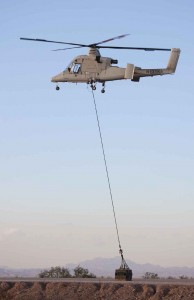
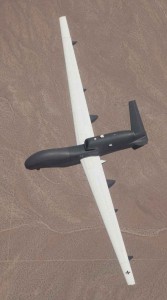
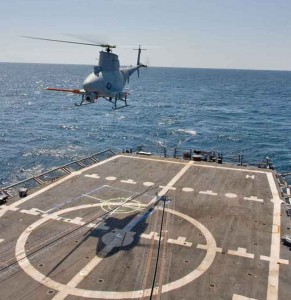
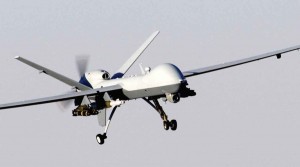
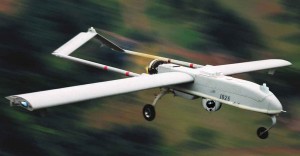
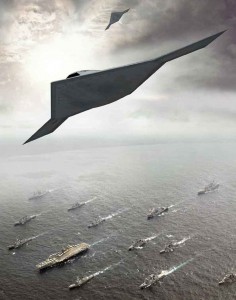
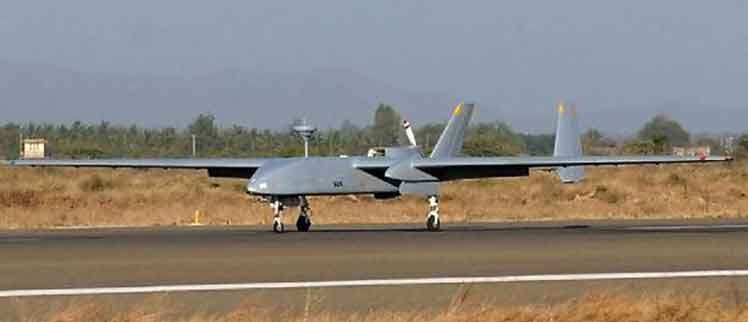
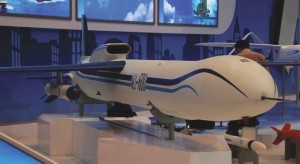
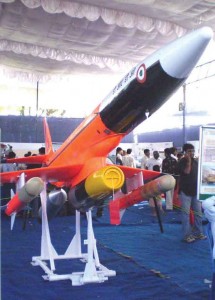
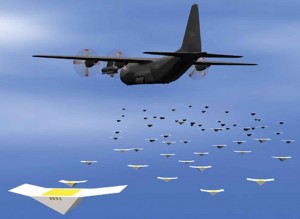

It was a good read